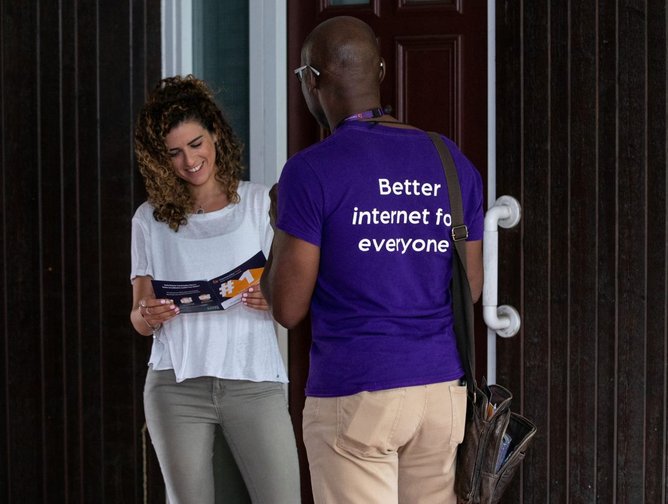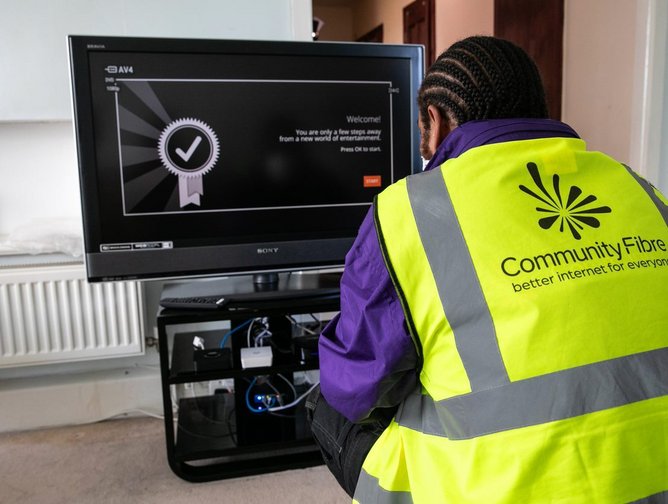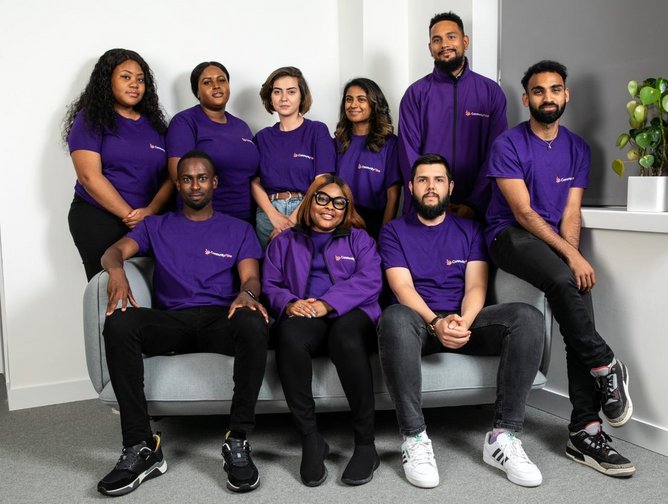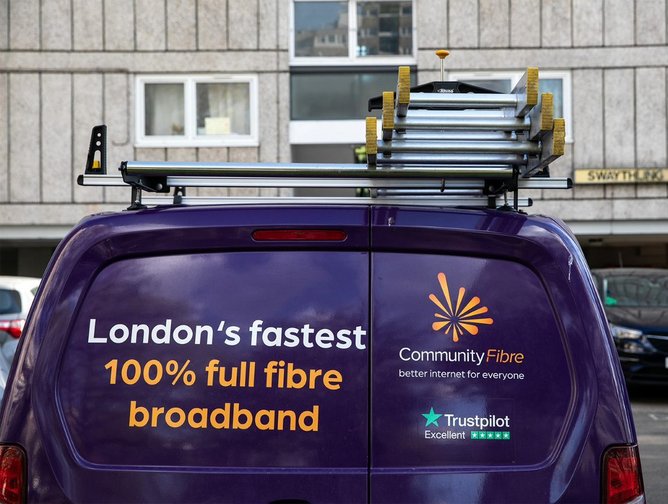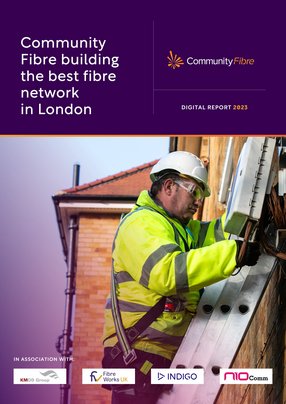Community Fibre: Building London's best broadband network
In today's world, broadband connectivity has become an essential part of our daily lives. From remote work and online learning to streaming entertainment and staying connected with friends and family, high-speed internet access is crucial for many aspects of modern life.
As a result, some even argue that broadband should be considered the fourth utility alongside water, electricity, and gas.
“If I asked my kids if they would prefer to have the gas, water, or WiFi on, they'd unanimously say ‘The WiFi,’” comments Richard Perry, Network Delivery Director at London-based broadband company Community Fibre.
“For everything else, we'll put on another coat, or we won't wash for a couple of days,” he laughs. “Today, WiFi is such a key thing, for all ages. If I look at my parents, who are elderly now, they are so reliant on broadband for staying in touch with people, managing their bills, and switching on their heating. It touches everyone.”
Community Fibre is on a mission to provide a true fibre-to-the-home service to residents of one of the busiest cities in the world. It offers the fastest 100% full-fibre broadband in London, with up to 10,000 Mbps for businesses and up to 3,000 Mbps for consumers, at the most competitive prices on the market.
“We build, own, and operate our own dedicated 100% full fibre network,” comments Perry. “We're at the cutting edge of the latest technology that's available. We aren't reliant on anyone else's network, we are deploying our own. And that gives us superfast gigabit-capable broadband, delivered directly to the home.”
As Perry describes, Community Fibre is on a mission to build a network that provides Londoners with the fastest and most reliable fibre services at the most affordable prices, whilst being recognised for our outstanding customer experience and community spirit.
“We've got one of the largest fibre-to-the-home networks in Greater London,” he says, “and we’re striving to have the largest in the next couple of years.”
The aim: supplying full fibre to 2.2m Londoners
Joining Community Fibre in 2021 after a number of years working for Vodafone and most recently Virgin Media, Perry has seen the business grow dramatically. The one millionth premises milestone will be reached soon, while the business has a north star target of reaching 1.3 million homes able to connect to its network by the end of 2023, and 2.2 million customers by the end of 2024.
This rapid growth is one of Perry’s favourite things about his current role. “I think one of my favourite things about the industry is the fast pace of change,” he says, “and the opportunity to bring our customers much faster and better connectivity allowing them to transform the way they can work, learn and relax at home.”
With the pandemic forcing people to work from home and homeschool, there was an enormous reliance on high-quality broadband. “The fact that I played a part in bringing that to as many people as possible has probably been the most interesting thing because it's tangible: you can see the end products of what you're actually building.”
For Community Fibre, this growth is clear. Since joining the business, the organisation has tripled in size. “We've scaled delivery from 200,000 premises to fast approaching one million,” Perry says.
“We set out a clear strategy a couple of years ago that by the end of 2023, we wanted to reach 1.3 million premises across London, increasing to 2.2 million by the end of 2024. And we are on that trajectory path now.
“Every year, we have doubled, in terms of organisation size, customer connections, and also the amount of premises that we're able to connect up. So we continue to grow to meet those challenges and find more ways to be efficient as clearly we can’t just keep increasing the size of the organisation in keeping with a scaling customer base and network .”
With approximately 3.7 million premises in London, and with plans to have built networks to at least 2.2 million of those by the end of 2024, few organisations can claim a similar footprint in the city.
But Community Fibre’s mission doesn’t stop there. The aim, Perry explains, is to build the best fibre network in London, but also to do this with the customer experience and community spirit in mind.
“We continue to invest in our people, continually looking at innovative ways to reach more homes in the fastest, most economically viable manner,” he comments.
“We develop relationships with landlords, in both the public and private sectors, to serve more multi-dwelling units to provide them with fibre to the home. This is a key requirement in London, given the amount of multi-dwelling units compared to many other cities in the country.
As its name would suggest, community is at the heart of everything Community Fibre does. The company provides free 1Gbps broadband to over 500 community centres around London, giving high-speed internet access for training, work, education and community projects, and offers digital skills training to residents in connected Community Spaces through its network of digital ambassadors.
“We have digital ambassador programmes,” Perry explains. “We enable community centres and spaces in conjunction with some of our larger social landlords. So it isn't just about selling into individuals, it's about what can we do for that local community to create and provide more access to broadband.”
Partnerships essential to success
All this growth wouldn't be possible, Perry explains, without having a clear strategy set down from Community Fibre’s board, having great people in position, and striking real, lasting partnerships with build partners. These long-lasting relationships, he adds, have enabled Community Fibre to scale and grow.
“We've got a number of build partners that we work with to design our network in the first place, and then to build our core distribution, and, also, then to serve our multi-dwelling unit (MDU) and single dwelling unit (SDU) premises.”
Among some of Community Fibre’s build partners are Niocomm, KMCO and FibreWorks, which the organisation started working with as far back as 2019.
“As we've scaled our network, they've scaled their ability to support our ever-increasing build demands. So we've got a long-standing relationship with them, and they've been a key success to our partnership.
“Similarly with Indigo, one of our main design and planning partners, we've worked extensively with them over the last three years or so to create the plans for our build partners to go and execute on.”
Central to Community Fibre’s approach is one of partnership rather than a traditional client-supplier relationship. This combined effort is helping Community Fibre, and its partners, achieve their goals.
“We work really closely with all of our partners,” Perry says. “It's a combined effort. I've seen in other organisations, in other industries, there's often a very traditional client-supplier relationship manner. We don't have that. We work hand-in-hand. Our success is their success and vice versa.
“We are very much part of each others team,” he adds. “And that's the way in which we found success to deliver. So we don't have all the answers, our build partners don't have all the answers, but working together, we come up with workable solutions.
“We encourage dialogue between our build partners as well, so we don't try and keep them separate,” Perry asserts. “If something's working for one build partner, then we're pretty confident others will benefit from that as well. So we're very much supportive of sharing best practices and working together to achieve our goals.”
Looking to the future at a pivotal time for the industry
The rollout of full fibre broadband is an increasing priority. Although broadband is sufficient for most household needs, the demand for services that use a lot of data, such as online video streaming, is on the rise.
And with the UK Government setting a target for gigabit broadband to be available nationwide by 2030, as Perry explains, the future will see more and more coverage of full-fibre broadband.
“In terms of future trends, we are going to see more emerge in the coming years. Better connectivity enables more people to have a better work-life balance. And because there is less reliance in an office, there’s the flexibility to work from home, even work from other locations that aren't home on a day-to-day basis.”
Also on the horizon will be new TV services and ways for people to consume media. “I think TV services will massively change in the coming years,” Perry predicts. “We'll be less reliant on the traditional TV subscriptions that we get today. And even just paying for your TV licence. There'll be more over-the-top services. To enable that, you need to have good, reliable, fast broadband.”
This, Perry describes, is a pivotal time for the industry. But with increasing competition and more choices than ever for consumers, it is in everybody’s interests to ensure as many premises have access to fast, reliable broadband.
“In terms of the rest of the industry, it's at a pivotal moment right now. There are lots of alternative networks throughout the country, each receiving significant investment and that's great. But in order to maintain that investment, you have to be delivering on your plans, both in terms of build and sales.
“What’s put Community Fibre in such a strong position is demonstrating we continuously deliver against our plans,” concludes Perry. “In the coming years, we'll see some more mergers and acquisitions along the way in the UK telco space. But, ultimately, it's in everyone's best interests to ensure that as many premises throughout the UK have access to superfast, reliable broadband.”
